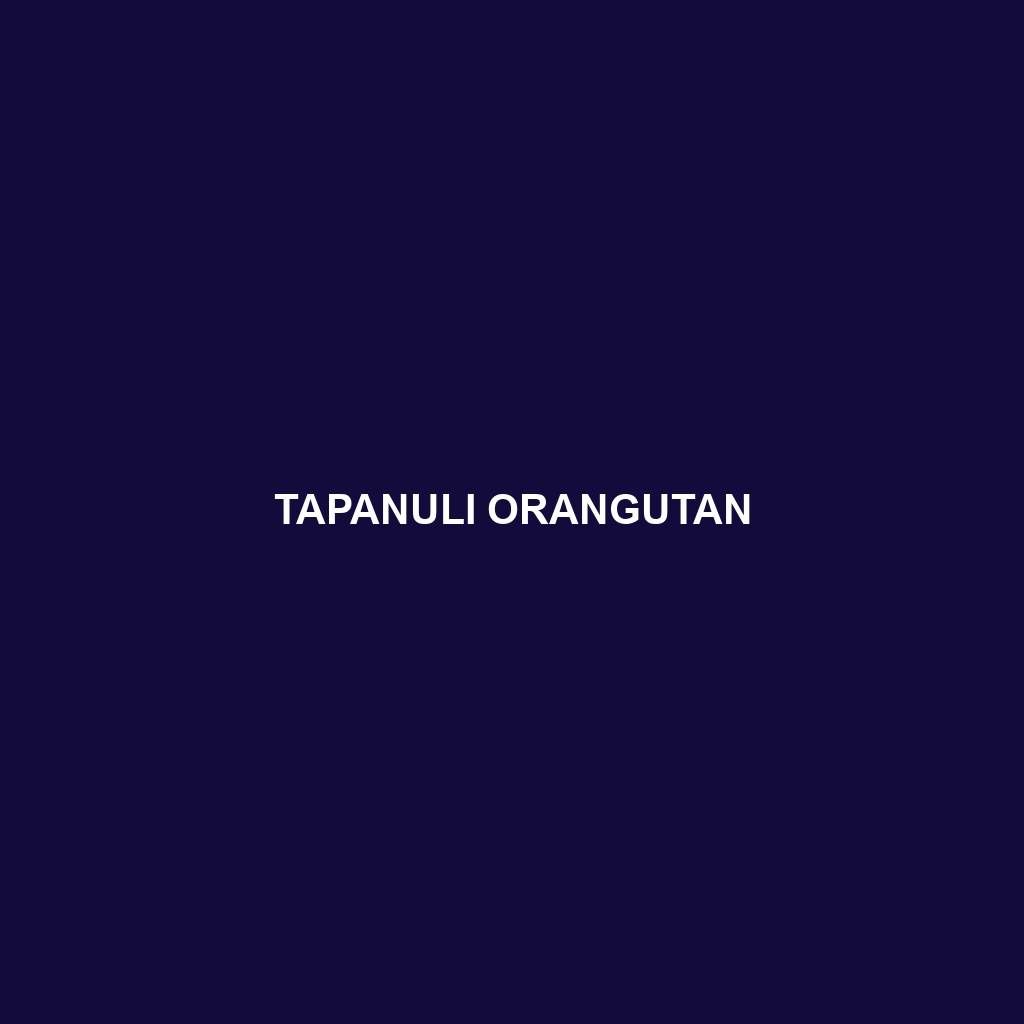Tapanuli Orangutan: A Detailed Profile
The Tapanuli Orangutan (Pongo tapanuliensis) is a recently discovered and critically endangered species of great ape, native to the forests of Sumatra, Indonesia. With distinctive physical and behavioral traits, these orangutans have captured the attention of primatologists and conservationists alike, adding to the biodiversity and complexity of tropical ecosystems.
Physical Characteristics:
Size: Adult males typically weigh between 90-130 pounds (40-60 kg) and stand about 4.5 feet (1.37 meters) tall, while females are smaller, weighing around 66-88 pounds (30-40 kg) and reaching up to 3.5 feet (1.06 meters) in height.
Coloration: Their fur is a striking reddish-orange, denser and frizzier than that of other orangutan species. The coloration helps them blend into the forest canopy.
Special Features: Males possess large cheek flanges and throat pouches which amplify their calls. Both sexes have elongated arms, with a span considerably longer than their body height, aiding in their arboreal lifestyle. Their facial hair is also distinct, with a notably mustached appearance.
Behavioral Attributes:
Social Interactions: Tapanuli Orangutans are generally solitary, particularly males, who maintain large territories and interact with females primarily during mating. Females and their offspring may form loose associations.
Feeding Habits: They are omnivorous, with a diet predominantly consisting of fruits, leaves, bark, and insects. Figs and fruits from the durian tree are particularly favored.
Ecological Roles: As seed dispersers, these orangutans play a critical role in maintaining forest health and diversity. Their foraging habits help in the propagation of numerous plant species.
Habitat and Distribution:
Natural Habitat: Tapanuli Orangutans inhabit the tropical montane and lowland forests of the Batang Toru ecosystem in North Sumatra. These areas are rich in biodiversity and provide the necessary resources for their survival.
Adaptations: Adaptations to their environment include strong, flexible limbs for brachiation (tree swinging), and a highly developed sense of smell to locate ripe fruits. Their thick fur provides insulation against cooler mountain temperatures.
Conservation Status:
Status: Classified as Critically Endangered by the IUCN, with an estimated population of fewer than 800 individuals.
Threats: Major threats include habitat loss due to illegal logging, agricultural expansion, mining, and infrastructure development. Additionally, hunting and human-wildlife conflict pose significant risks.
Conservation Efforts: Efforts to protect the Tapanuli Orangutan involve habitat preservation, anti-poaching patrols, and community engagement programs to promote sustainable land use practices.
Fascinating Fun Facts:
Discovery: The Tapanuli Orangutan was only recognized as a distinct species in 2017, making it the first new great ape species identified since the 1920s.
Communication: They use a range of vocalizations, including long calls from males that can be heard over a mile away, to communicate and establish territory.
Tool Use: Like their Sumatran and Bornean relatives, Tapanuli Orangutans are adept at using tools, such as sticks to extract insects or honey from tree crevices.
The Tapanuli Orangutan is a remarkable emblem of Earth’s biodiversity and a critical species in need of urgent conservation efforts. Ensuring their survival requires global awareness and concerted action to protect their diminishing habitat.
